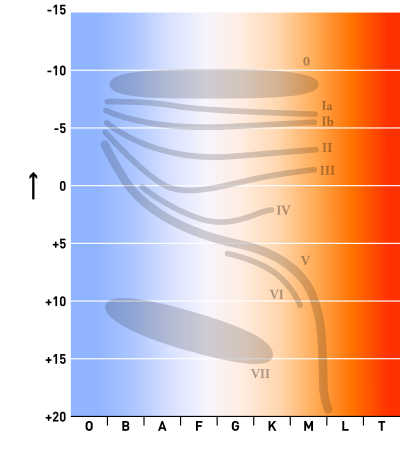In astronomy, a blue giant is a hot star with a luminosity class of III (giant) or II (bright giant). In the standard Hertzsprung–Russell diagram, these stars lie above and to the right of the main sequence.
The term applies to a variety of stars in different phases of development, all evolved stars that have moved from the main sequence but have little else in common, so blue giant simply refers to stars in a particular region of the HR diagram rather than a specific type of star. They are much rarer than red giants, because they only develop from more massive and less common stars, and because they have short lives in the blue giant stage.
Because O-type and B-type stars with a giant luminosity classification are often somewhat more luminous than their normal main-sequence counterparts of the same temperatures and because many of these stars are relatively nearby to Earth on the galactic scale of the Milky Way Galaxy, many of the bright stars in the night sky are examples of blue giants, including Beta Centauri (B1III); Mimosa (B0.5III); Bellatrix (B2III); Epsilon Canis Majoris (B2II); and Alpha Lupi (B1.5III) among others.
The name blue giant is sometimes misapplied to other high-mass luminous stars, such as main-sequence stars, simply because they are large and hot.[1]
- ^ "What is the life cycle of a blue giant star?". Retrieved 2017-12-11.
